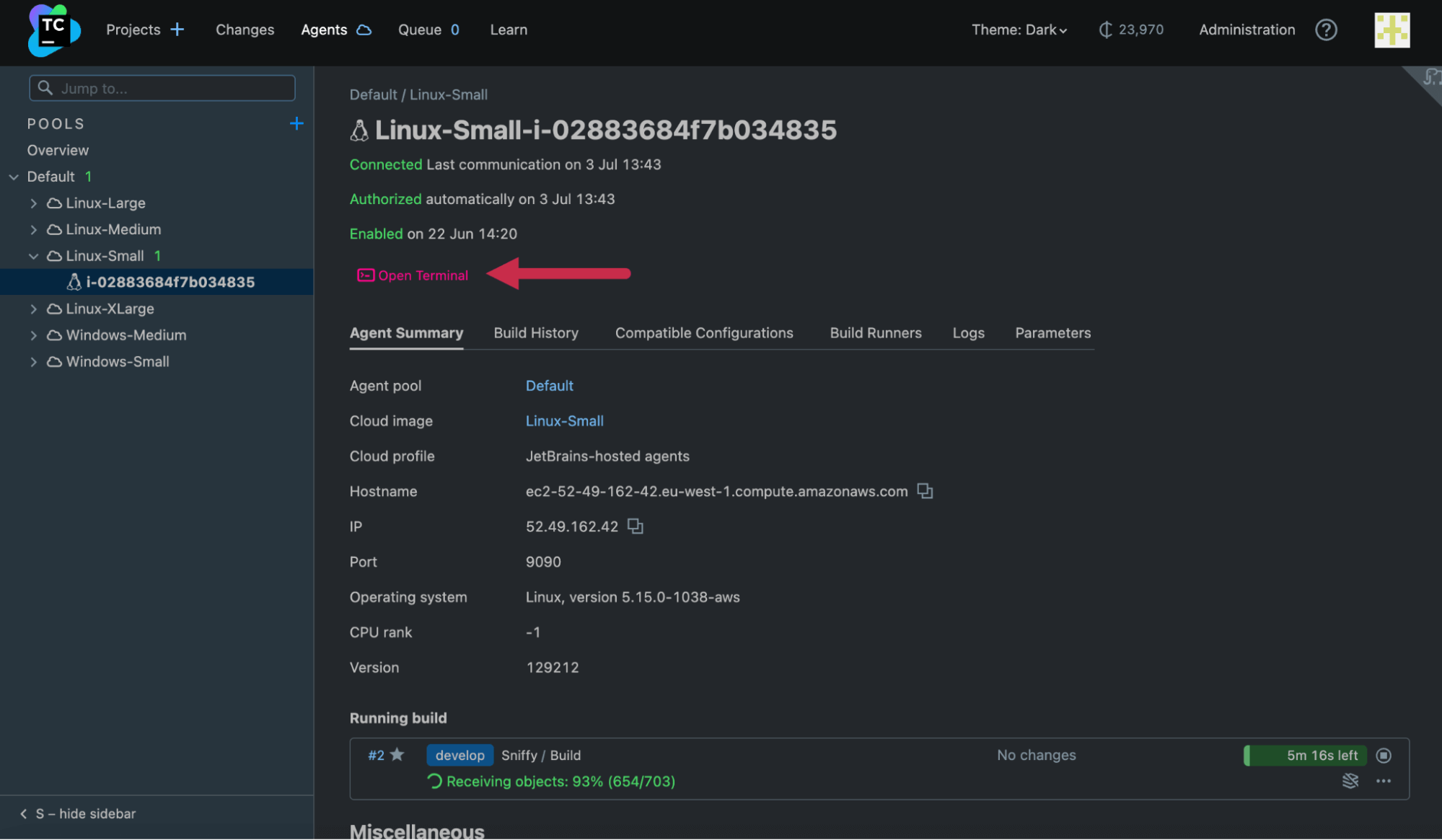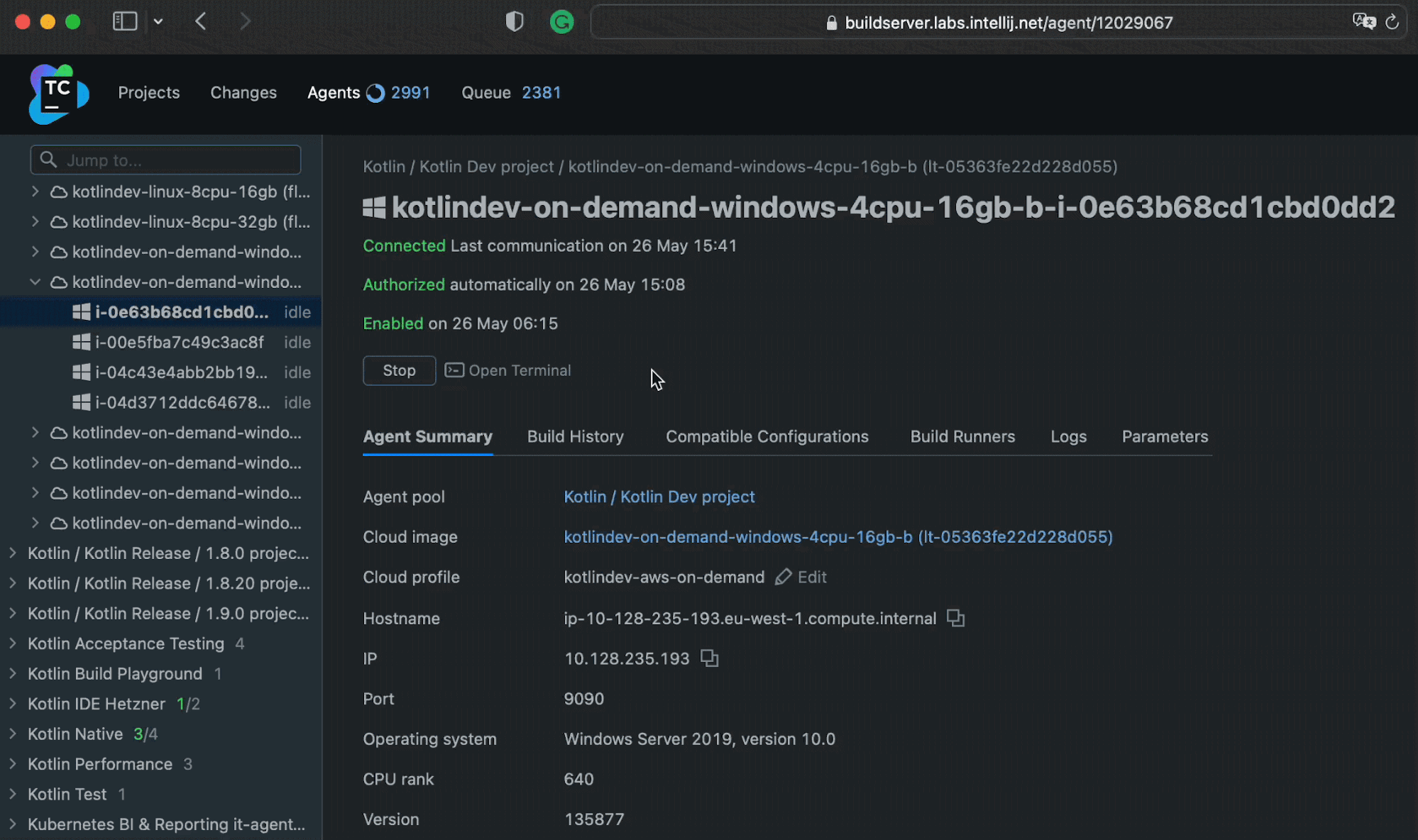TeamCity
Powerful CI/CD for DevOps-centric teams
Introducing Agent Terminals in TeamCity
We’re introducing agent terminals in TeamCity: the new feature designed specifically to help you easily view system logs on agents, check installed software, and debug specific agent issues right from the TeamCity’s UI.
Let’s take a closer look at what this new feature is about.
What are agent terminals?
Starting from version 2023.05, TeamCity provides a convenient and quick way to get direct access to an agent machine by opening a remote terminal directly from the TeamCity UI. It is supported on Linux, Windows (with PowerShell), and macOS.
With the help of the agent terminal, you can investigate what exactly is happening on the agent.

How are agent terminals helpful?
The ability to open the terminal on the agent directly via the UI can come in handy in many use cases, especially when you need to check the agent environment when configuring a build or when you need to debug a failed build.
Checking the agent environment
Suppose you’re configuring a build and you’re not sure exactly what environment is installed on the agent. Previously, you’d need to start the terminal on your computer, configure SSH, and figure out how to access that exact agent.
Now, you can easily open the terminal with direct access to the agent in question and check the agent environment. This feature can save you a lot of time and effort.

Configuring a build and investigating build failures
Creating and editing build configurations entails a number of steps and might be time-consuming. You configure the first command, run the command, check the results, run the second command, check the results, and so on.
When commands are not running, debugging the root cause of the problem might be daunting. With the help of agent terminals, you can easily debug agents remotely by checking logs on the agent and seeing what caused the build to fail.
Agent terminals are especially helpful for single-use cloud agents, which are the default types of agents in TeamCity Cloud. Once you’ve accessed a cloud agent via the terminal, it won’t shut down, and you’ll have a chance to investigate logs or any other issues.
Maintaining agents
Agent terminals are also useful when you’re updating the environment on one of your agents. Instead of starting SSH just for one agent, you can easily log in to the agent through the terminal directly from the TeamCity UI.
Strengthening security
Agent terminals provide more transparency in security. Thanks to TeamCity, you have fine-grained control over permissions, which means you decide who has access to what. You can restrict agent terminal access to only the users who actually need it.
⭐️Check out our whitepaper “9 Ways to Prevent a Supply Chain Attack on Your CI/CD Server” for more security tips.
Who will benefit from agent terminals?
Getting one-click direct access to any agent machine is a powerful tool that can be used by anyone who needs it. This might be admins who are responsible for setting up build configurations and making sure they run correctly. It could also include developers, QAs, or DevOps engineers who need to look into the cause of a build failure.
Whether on-premises, virtual agent machines, or cloud agents, all types of agents can be accessed to provide a lot of value to different users.
Over to you
Do you find agent terminals useful for your organization? Share your thoughts in the comments below!
Feel free to reach out to us if you have any questions or suggestions. We’re always happy to hear your feedback.
Subscribe to TeamCity Blog updates





